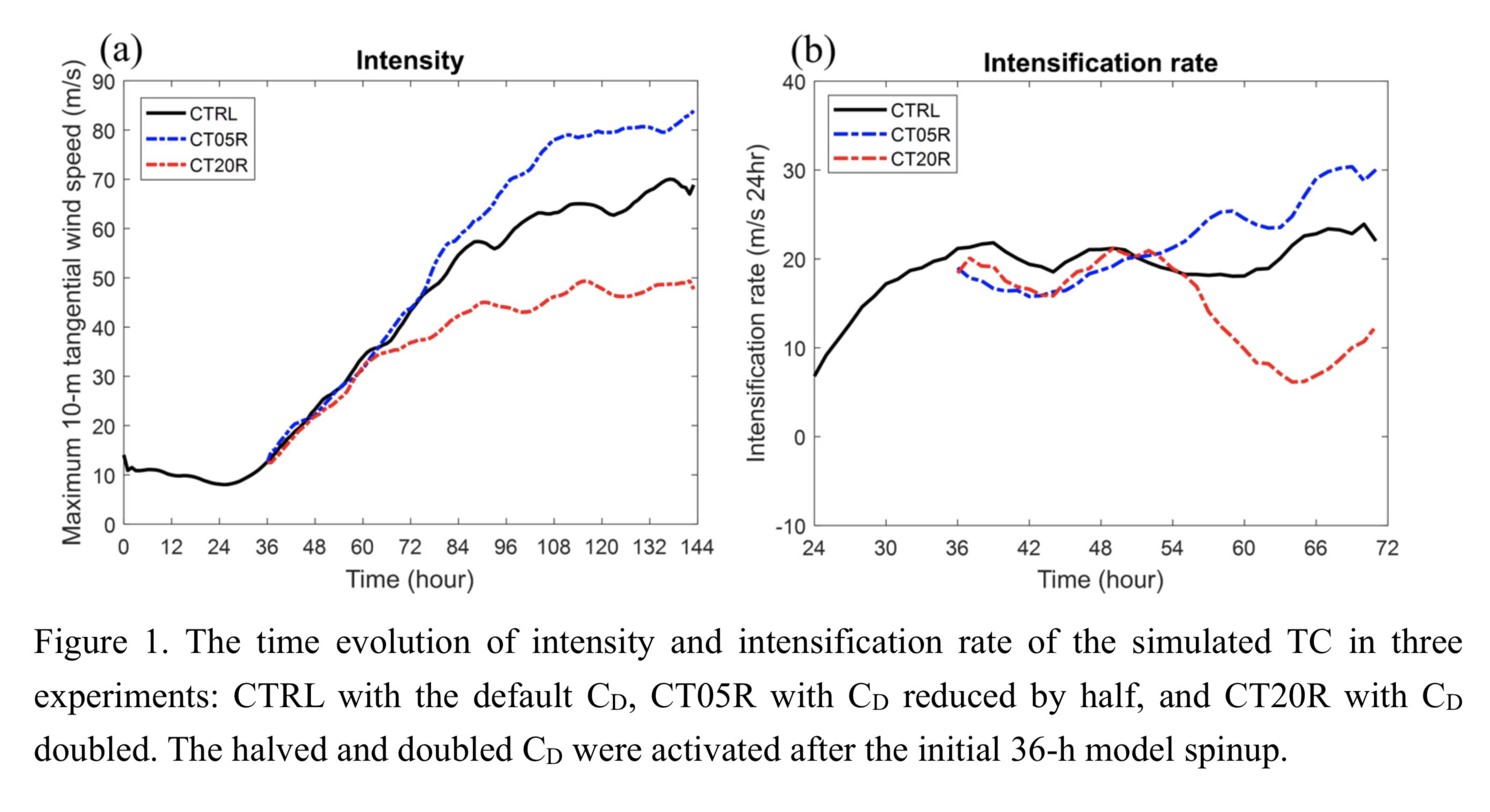Graphical Abstract
Li, T.-H., and Y. Wang, 2021: The role of boundary layer dynamics in tropical cyclone intensification. Part I: Sensitivity to surface drag coefficient. J. Meteor. Soc. Japan, 99, 537-554.
https://doi.org/10.2151/jmsj.2021-027
Graphical Abstract
Published
Plain Language Summary: Most previous studies have found that the intensification rate of a tropical cyclone (TC) simulated in high resolution numerical models is often insensitive to surface drag coefficient (CD) or surface friction. A new explanation to this finding has been provided in this study based on the hypothesis that although surface friction has dual opposite effects: negative direct frictional dissipation effect and indirect positive effect by strengthening and inwardly shifting eyewall updrafts/convection. We have demonstrated that the increased/reduced positive indirect effect of surface friction is roughly offset by the increased/reduced negative direct dissipation effect due to increased/reduced CD. As result, the intensification rate of the simulated TC is insensitive to CD (Figure 1). However, increased CD can result in earlier onset of the intensification stage through increasing frictional moisture convergence and Ekman pumping and thus moistening of the inner-core column of the TC vortex, but would lead to a weaker storm in the mature stage.
Highlights:
- Although surface friction has a dissipation effect on kinetic energy of the TC system, it can strengthen and inwardly shift the eyewall updrafts and contributes positively to TC intensification.
- The increased/reduced dual (positive and negative) effects above due to increased/reduced CD are nearly offset each other, leading to an insensitivity of the simulated TC intensification rate to CD.
- Increased CD can lead to increased frictional moisture convergence and Ekman pumping and thus moistening of the inner-core column of the TC vortex and earlier onset of the intensification stage, but would lead to a weaker storm in the mature stage.







